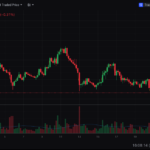Insider trading has long been one of the most controversial topics in financial markets. It refers to the buying or selling of a publicly traded company’s stock by someone who has non-public, material information about that company. While often associated with illegal activity, not all insider trading is unlawful.
What Is Insider Trading?
At its core, insider trading occurs when corporate executives, board members, or employees trade a company’s stock based on confidential knowledge that has not yet been disclosed to the public.
- Legal insider trading happens when company insiders (executives, directors, or employees) buy or sell shares and properly report their trades to the SEC (in the U.S.) or relevant regulators.
- Illegal insider trading occurs when insiders exploit material, non-public information for personal gain without disclosure—such as trading ahead of earnings results, merger announcements, or regulatory approvals.
Why It Matters
Insider trading can undermine trust in the financial system. If some investors have unfair access to information, markets lose transparency and credibility. This is why regulators, like the SEC in the U.S., closely monitor insider transactions.
On the other hand, when insiders legally purchase their own company’s stock, it often signals confidence in future performance—a data point that many investors track.
High-Profile Cases
Over the years, several high-profile cases have highlighted the risks of insider trading:
- Martha Stewart (2001): Convicted for obstructing justice in an insider trading probe.
- Raj Rajaratnam (2011): Hedge fund manager sentenced to prison for orchestrating one of the largest insider trading schemes in history.
- Congressional Stock Trades: Lawmakers, including names like Mikie Sherrill and others, have faced scrutiny over whether members of Congress use privileged information for trading decisions.
While not every case results in a conviction, such reports spark public debate about fairness and regulation.
How Investors Can Use Insider Data
Rather than viewing insider trading only as a risk, savvy investors monitor Form 4 filings (in the U.S.) to see when insiders are buying or selling shares.
- Insider Buying → Often interpreted as a bullish signal.
- Insider Selling → Can be neutral (for tax reasons, diversification) or negative if large and consistent.
Websites and analytics platforms provide transparency by tracking insider moves—helping retail traders understand market sentiment at the executive level.
Conclusion
Insider trading remains a double-edged sword: illegal when used to exploit confidential information, but informative when disclosed legally. For investors, keeping an eye on insider transactions can provide valuable clues about a company’s future, while reminding us why transparency and regulation are essential for market integrity.
📌 Takeaway: Insider activity can be both a red flag and a bullish signal—context is key.







